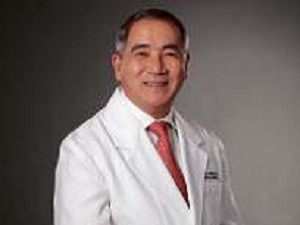The future of anti-aging and rejuvenation
MANILA, Philippines—We’ve always been told that excess fat—specially those around our bellies—is bad. But these unwanted tissues that plastic surgeons have been removing and throwing away for decades may be more valuable than they could ever imagine. These fats may end up, after all, as a very useful tool to make everyone feel great and away from diseases. Indeed, the use of autologous fat (meaning: sourced one’s own fat tissues) stem cells are fast becoming a game changer in the field of regenerative medicine. It is a new frontier that is slowly gaining acceptance among individuals wanting to be rejuvenated, and whose immune function and disease resistance greatly improved.
In fact, a number of experts and institutions are already using fat stem cells not just for cosmetic effects but to meet the slowly rising demand for anti-aging and rejuvenation treatments because it is plentiful in supply, it’s easier to obtain, and relatively inexpensive compared to a bone marrow extraction.
Anti-aging
“We always thought that stem cell-based treatment is for those who have used up all the conventional medical treatment options or whose diseases are already in the end stages. But what if I tell you that apart from improving the management of degenerative diseases like diabetes, Alzheimer’s, Parkinson’s, arthritis, the autologous fat stem cell transplant could also be used as an anti-aging agent, for boosting immune system, mental alertness and even libido?” shared Dr. Florencio Lucero, regarded as the one who pioneered the autologous fat stem cell transplant in the Philippines. Lucero, a renowned plastic surgeon with 32 years experience and has been doing the autologous fat stem cell transplant since 2006, explained that the procedure involves suctioning at least 100mL of fats out from the patient’s abdominal or tummy area just like in a liposuction procedure.
He explained that fat tissue yields an abundance of adipose stem cells when compared to any other source (ranging in the millions per unit volume when compared to those taken from the bone marrow and peripheral blood) and that the process is simple, employing minimally invasive mini-liposuction procedure.
“The harvested fats are then processed so stem cells could be extracted. The harvested stem cells are then activated using the growth factors released from the plasma of the patient’s blood. Once activated, the stem cells are added to the intravenous fluid being infused to the patient for about 30 minutes to one hour. The whole procedure takes four hours to complete,” related Lucero. The patient should be able to feel the effect from two weeks to up to 11 months. Lucero, a premier key opinion leader in the field of plastic, aesthetic and reconstructive surgery, shared that he is a licensed fat stem cell transplant surgeon by the technology provider from Australia and performs the procedure at a world class ambulatory facility, MEDICard Lifestyle Center located at the corner of Paseo de Roxas and Sen. Gil Puyat avenue, Makati City.
Platelet-Rich Plasma (PRP)
The philosophy to merge cutting edge technology with the body’s natural ability to heal itself is especially evident in another new technology called platelet rich plasma.
“Platelet-rich plasma is a natural component of our blood. One good example is when our skin is scratched or cut. If we clean, put medicine and dress the wound, the skin heals and closes eventually. But this procedure only addresses the infection—the closing of the wound and the smoothening of the skin is courtesy of our body’s natural healer. It is the platelets in our blood that activate a natural process that repairs and knits damaged cells,” explained Dr. Mary Jane Torres of Zen Institute, a medical spa.
She further explained that the PRP is non-surgical and non-invasive since the process involves using the patient’s own blood and thus poses no risk of allergy. The most common conditions for PRP therapy include: fine wrinkles around the eyes, nasolabial grooves, wrinkles on the lips, acne marks, wrinkles on the forehead, wrinkles on the neck, bags and dark circles under the eyes and loose and saggy skin.
A small amount of blood is taken from the patient— no more than what is usually taken in a routine blood test—and then processed to “harvest” PRP. This PRP is then injected into the site where wrinkles and fine lines are present.Within about 30 minutes, the lifting and smoothening effects are clearly visible, said Torres. The PRP addresses that fact that the aged skin has less collagen, has reduced amount of hyaluronic acid, and low ability to retain moisture. What PRP does is to release growth factors that allow cell growth and production of collagen. With enough amount of collagen and improved skin elasticity, the skin’s ability to retain moisture is restored. The Zen Institute (A Medical Spa) is located at Unit C1 and C2, 32nd Street in Bonifacio Global City, Taguig. Visit www.thezeninstitute.com (Advt)
















